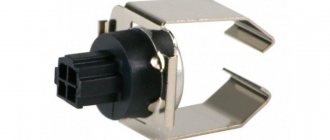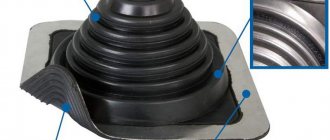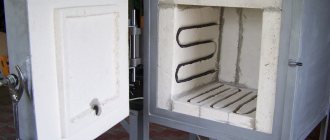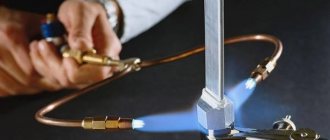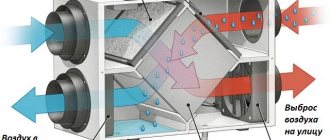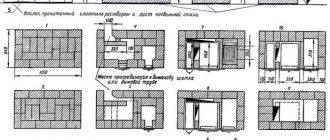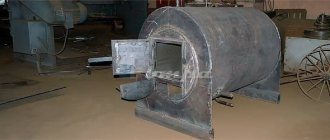How to make free electricity at home?
Free electricity in the apartment must be powerful and constant, so to fully ensure consumption, a powerful installation will be required.
The first step is to determine the most suitable method. Thus, for sunny regions it is recommended to install solar panels. If solar energy is not enough then wind or geothermal power plants should be used. The latter method is especially suitable for regions located in relative proximity to volcanic zones. Having decided on the method of obtaining energy, you should also take care of the safety and security of electrical appliances. To do this, the home power plant must be connected to the network through an inverter and voltage stabilizer to ensure the supply of current without sudden surges. It is also worth considering that alternative sources are quite capricious in terms of weather conditions. In the absence of appropriate climatic conditions, electricity generation will stop or be insufficient. Therefore, you should also acquire powerful batteries for storage in case of lack of production.
Ready-made installations of alternative power plants are widely available on the market. True, their cost is quite high, but on average they all pay off in 2 to 5 years. You can save money by purchasing not a ready-made installation, but its components, and then independently design and connect the power plant.
Lighting with solar panels
Today, many people install solar panels in their private homes and even apartments. With their help, you can not only save on electricity, but also illuminate a garage that does not have electricity.
Garage lighting with solar panels
Despite the popularity of this lighting method, it is unlikely to be suitable for a garage for the following reasons:
- the cost of one solar battery and its connection will cost a significant amount;
- It is unlikely that you will be able to install such a system yourself without the help of specialists;
- complexity of the system for connecting lighting devices and batteries to storage equipment (batteries).
But by spending once on the purchase and installation of solar panels, you will not only receive high-quality autonomous lighting for any room, including the garage, but you will also be able to sell the excess electricity that has accumulated to the state. A 12-volt lamp can be powered from such a system. Moreover, their number can reach several pieces, which is just suitable for a given room. If there is a need for a voltage of 220 volts, then this system needs a 12 volt converter or inverter.
DIY electricity from the ground
Zinc and copper electrode
The next method of generating electricity is based on using only land. Two metal rods are taken - one zinc, the other copper, and placed in the ground. It is better if it is soil in an isolated space.
Isolation is necessary in order to create an environment with high salinity, which is incompatible with life - nothing will grow in such soil. The rods will create a potential difference, and the soil will become an electrolyte.
In the simplest version, we get a voltage of 3 V. This, of course, is not enough for a home, but the system can be complicated, thereby increasing the power.
Neutral wire – load – soil
Voltage is supplied to residential premises through 2 conductors: phase and neutral. When creating a third, grounded conductor, a voltage of 10 to 20 V arises between it and the zero contact.
This voltage is enough to light a couple of light bulbs. Thus, to connect electricity consumers to “ground” electricity, it is enough to create a circuit: neutral wire - load - soil. Craftsmen can improve this primitive circuit and obtain a higher voltage current.
Many thanks to the sites for the excellent material: www.0el.ru,lidol.ruotlad.ru
Method 3 - Potential between roof and ground
3. A fairly large potential difference can be created between the roof of the house and the ground. If the surface on the roof is metal and the surface in the ground is ferrite, then you can achieve a potential difference of 3 V. This figure can be increased by changing the size of the plates, as well as the distance between them.
It is legal?
Yes, the power grid is not punished for this, since we will not use the phase. And in fact this is not theft.
Will electric meters take this energy into account?
It all depends on the type of electricity meter. There are meters with one shunt (with one measuring element) - the most common and two-shunt (with two measuring elements). One shunt I just don’t take into account zero - since their measuring shunt is located on the phase.
How much electricity can you get?
It all depends on the number of subscribers in the network and the power of all wiring. Usually it's somewhere between 3-10 volts. If you connect a step-up transformer, you can light an LED lamp. The voltage after the step-up transformer is about 100-220 V.
Scheme
Any transformer from a radio, tape recorder, etc. It is advisable to use a low voltage of 3-9 Volts on the secondary winding. Please note that you use all manipulations at your own peril and risk.
DIY electricity from the ground
Nevertheless, many people do not give up trying to extract electricity from the earth in order to make their lives easier or change, and they should not be stopped, because the most important discoveries in the history of mankind were made by persistent people who were in love with their ideas.
Alternating current, which powers all electrical appliances in apartments, enters homes through two conductors: zero and phase. Due to grounding, a large amount of energy goes into the soil. Of course, no one wants to pay for something that they cannot fully use. Therefore, enterprising people have long understood how to extract energy from the earth using a neutral wire.
This method is based on the fact that the earth, due to its physical properties, is both an energy store and its conductor.
Underground cable laying diagram
To extract electricity, you need to create a simple circuit.
- At a sufficient distance, two metal stakes are dug into the ground, one of which is the cathode, and the second is the anode, as a result of which energy with a voltage of 1 to 3 V will appear. The current strength in this case will be negligible.
- To increase the voltage and current, you will have to drive a lot of pins into an area with a huge area, both in series and in parallel connected to each other. A series connection increases the voltage, and a parallel connection increases the current.
- When the voltage reaches 20-30 V, it is necessary to connect a simple transformer to the circuit to increase the output voltage and a battery to accumulate and stabilize electrical energy. The last stage is the transformation of direct thirty-volt current into alternating current, with a voltage of 220 V.
Zinc and copper electrode
This is the simplest, cheapest and most effective way to generate electrical energy at the moment; it is on this principle that the batteries we are used to are constructed.
The first step is to isolate a certain amount of soil in order to create the most acidic environment possible. Then connect the zinc and copper electrodes to this isolated ground. The output actually turns out to be electricity. This principle of obtaining energy largely depends on the quality of the soil - the more acidic it is, the better.
Zinc and copper battery
You can conduct an interesting experiment by placing two keys - copper and iron - in an orange. The result is a voltage of up to 1 V. The decisive factor is the area of the electrodes in contact with the acid and the acidity level of the orange itself.
This amount of energy is enough to charge a simple phone. To increase the power, you need to connect several more of the same circuits in parallel to this circuit. As a result, you will be able to charge a smartphone or laptop, but you will have to allocate a huge room for a power station made of oranges and electrodes.
This method of obtaining energy is good, but not reliable and not durable: as soon as the zinc and copper electrodes begin to oxidize, the voltage will begin to drop, and then the energy supply will stop. The situation can be corrected by cleaning off the oxide and adding acid.
Potential between roof and ground
A metal pin is installed in the ground, a wire is pulled from it to the roof, and the resulting electrical energy can be safely used.
True, only until the first thunderstorm, because in essence it is a real guide.
At best, wiring and electrical appliances will be damaged; at worst, the lives of the inhabitants of the house will be threatened.
Features of electrical installation
If everything is more or less clear with the sources, we move on to the rules for arranging the electrical network itself:
Electrical panel installation
- The installation of wiring and electrical appliances in a country house can be done with your own hands, but it is better to entrust the connection to the main line or generator to specialist electricians.
- We must install a sign with a meter at the entrance to the house. We also connect each branch of wires to the panel through an RCD - an automatic circuit breaker. The use of such fuses can protect the system from voltage surges and short circuits.
Advice! If you are often away, then it makes sense to set up remote switching on of electricity at your dacha. To do this, we install a special module with a GSM receiver in the panel, which activates the entire system based on a signal from a mobile phone. It is especially convenient to use such a controlled unit in winter: by the time you arrive, the heating devices will have time to warm up the air.
To protect against fire, we lay wires in non-flammable channels
- When using generators, you need to carefully calculate the power of all devices connected to the network. For example, heating a country house with electricity may require the installation of a separate generating unit, otherwise in the fall and winter we will have to choose: either our batteries work or the light bulbs shine.
- Country houses made from block containers, frame structures and log buildings are highly flammable. To reduce the risk of fire, all wiring should be laid in non-flammable, preferably metal, boxes.
Proper grounding is one of the safety conditions
- It is also highly desirable to ground the wires. To do this, we connect each branch of the system to a grounding circuit brought out. The circuit most often consists of a triangle of steel or copper-plated rods dug into the ground and connected to the house electrical network by a conductive cable.
What else?
Among the usual ones, you can also find quite unusual ways of generating electricity. Recently, scientists around the world have been intensively working on the development of alternative energy. The world is looking for opportunities for its wider use.
Below is a short overview of the best methods and ideas:
Thermal generator – converts thermal energy into electrical energy. Built into heating and cooking stoves.
Piezoelectric generator – works on kinetic energy. They are introducing dance floors, turnstiles, and exercise equipment.
Nanogenerator - uses the energy of vibrations of the human body during movement. The process is instantaneous. Scientists are working on combining the work of a nanogenerator and a solar battery.
Experimental installations that operate on ether - electromagnetic field. While the search is still underway, hypotheses are being tested, experiments are being conducted.
Scientists have calculated that the natural reserves used in modern energy may last for another 60 years. The best minds are working on developments in this area. In Denmark, the population relies on wind energy for 25%.
In Russia, projects are planned to use renewable sources in the energy system by 10%, and in Australia by 8%. In Switzerland, the majority voted for a complete transition to alternative energy. The world votes yes!
Grounding example
This method is suitable for owners of a private home. When a home is equipped with a correct grounding loop, some of the current enters the ground, especially when several powerful electrical appliances are operating simultaneously. The potential difference between the ground wire and phase zero can reach 15-20 V. This way you can charge your phone for free, the meter will not take it into account.
The method can be improved by installing a transformer, this will equalize the voltage. Connecting the battery at a time when the main consumers of electricity at home are turned off will make it possible to stock up on energy for future use. A completely working method, which is not suitable for apartments, since water pipes cannot be used, and connecting to ground and phase can end sadly.
Free electricity from the sun
Solar batteries are very popular in Europe. You've probably heard about this method of generating electricity. And it really works, and is not an option on how to make money on glass.
Of course, in order to use such energy, you first need to spend a lot of money, because solar panels are not cheap, and in order to provide the entire house with such energy, you will need to buy a lot of them. You also need to take into account that if your house is in the forest, it will not be possible to convert solar energy into electricity. Problems can also arise during the cold season. However, solar stations have several significant advantages.
Advantages of solar power plants:
- Solar energy is eternal;
- It does not release harmful substances into the environment and does not contribute to the accumulation of radio waves;
- You will be able to calculate in advance how much energy you can get from a particular number of batteries;
- The price spent on batteries will be recouped over time due to the savings on electricity.
Solar electricity is an excellent alternative to centralized electricity. All your electrical needs can be covered with it.
Lighting using a gasoline generator
Instead of a wind generator, you can use a gasoline or diesel generator to create autonomous garage lighting.
Gasoline generator
It is rational to use a gasoline generator only when problems with electricity are rare and the lights are turned off for a short period of time. It is also rational to purchase it if you often use power tools in the garage.
Electricity from water at home
This pipe can convert the pressure of tap water into electricity, which can be used for home use.
To generate electricity, you need to install a device in the pipe, then open the valve. The water will then produce the desired electricity by moving small wheels inside the device.
The generated energy is accumulated in special lamps, which are installed after charging in their place for the intended use, and the brightness of their glow can be adjusted.
This method can be used by people all over the world where tap water is available. It's strange that no one thought of this before. Therefore, Choi’s invention reached the finals of an industrial design competition and is already being prepared for serial production. One English inventor, Ryan Yongwoo Choi, developed a method for generating electricity at home from tap water, and came up with a pipe that has a water wheel inside, and called it ES Pipe Waterwheel.
Selection of the optimal system
Now a little about which system is better to use in different cases.
At a summer cottage or country house, you can use any autonomous energy supply. Everything depends on climatic conditions.
In the southern regions, where there are many sunny days a year, it is preferable to use a solar energy supply system, while in the northern regions it is preferable to use a wind power system.
In this case, it is better to immediately make a combined system so that there is a backup power source, and fuel-powered installations are excellent for this.
As for urban conditions, only solar and wind systems are suitable for autonomous energy supply to an apartment, the main elements of which (panels, wind turbines) can be installed on the roof of the building.
Other autonomous systems cannot be used in apartment conditions.
Important to know: Rules for installing electrical wiring in a wooden house.
Known methods for generating electricity
In the first case, electricity is generated from the ground using two rods made of dissimilar metals. This method has nothing to do with the Earth's electric or magnetic field. The rods are used as a galvanic couple placed in a saline solution. If the experiment is carried out in its pure form, then a potential difference, that is, an electric current, is formed at the ends of metal rods immersed in an electrolyte solution.
The amount of current received will vary depending on factors such as the size of the electrodes, the characteristics of the electrolyte, the depth of the deposit, etc.
Using the same scheme, you can get electricity from the ground. For this purpose, rods of copper and aluminum are taken, which will be used as a galvanic pair. They need to be buried in the ground by about 50 cm, located at a distance of 20-30 cm from each other. A large amount of saline solution is poured onto the soil area located between the rods, and after 5-10 minutes control measurements can be taken using an electronic voltmeter.
The voltmeter shows different values, the maximum result was 3 volts. An electrolyte solution is prepared from distilled water and table salt.
The second option for extracting current is also not related to the Earth's magnetic field. The idea is to extract the electricity flowing down the ground wire during times of maximum power consumption. The “zero” conductor also participates in this process.
Everyone knows that voltage is supplied to consumers via phase and neutral wires. If there is a third wire connected to the ground loop, voltage often arises between it and the neutral conductor, sometimes reaching up to 15 volts. This condition can be determined using a 12 volt incandescent lamp connected to both conductors. It is impossible to record it in any other way, since the metering devices do not react to this in any way and the current flowing from the “ground” to zero is not determined.
This method is unsuitable for apartments, since they usually do not have grounding that can perform its function. Similar experiments work well in private homes with a classic ground loop. The connection diagram is carried out from the neutral conductor to the load and then to the ground wire. In the process of extracting electricity from the ground with their own hands, some home electricians use transformers to smooth out current fluctuations and then connect the most optimal load.
It is strictly forbidden for a phase to be connected instead of the neutral conductor, in order to avoid deadly situations.
Lighting using a wind generator
For autonomous lighting of the garage, you can use a homemade wind generator. Such a windmill will also generate free electricity, which can be used to power a 12-volt lamp.
Note! You can either make a windmill yourself or buy a ready-made device. However, a purchased wind generator will cost a pretty penny.
Homemade wind generator
When creating this type of lighting, wind speed must be taken into account. In a situation where strong winds are rare in the area of residence, then this method of lighting will be ineffective. Here, all the costs that went into installing a wind generator will not pay off.
Prey from the air
Atmospheric electricity may well be used. Many are attracted by the opportunity to put natural elements at their service during a thunderstorm.
The atmosphere also contains waves from the planet's field. It turns out that electricity can be extracted from the air on your own, without using highly complex devices.
Some methods are as follows:
- lightning batteries use the property of electrical potential to accumulate;
- a wind generator converts wind power into electricity, operating for a long time;
- ionizer (Chizhevsky chandelier) is a popular household appliance;
- Stephen Mark's TPU (toroidal) electricity generator;
- Kapanadze generator is a fuel-free energy source.
Let's take a closer look at some of the devices.
Wind generators
A popular and well-known source of energy obtained from wind is a wind generator. Such devices have long been used in many countries.
A single installation provides limited power supply needs. Therefore, it is necessary to add generators if it is necessary to provide energy to a large enterprise. In Europe, there are entire fields with wind turbines that do not harm the environment at all.
It is worth noting:
A disadvantage may be the inability to calculate in advance the voltage and current values. Consequently, it is impossible to say how much electricity will accumulate, since the action of the wind is not always predictable.
Lightning batteries
A device that accumulates potential using atmospheric discharges is called a lightning battery.
The device circuit includes only a metal antenna and grounding, without complex converting and accumulating components.
Potential appears between the parts of the device, which then accumulates. The impact of natural disasters is not subject to precise preliminary calculation and this value is also unpredictable.
It is important to know: this property is quite dangerous when implementing the circuit with your own hands, since the created circuit attracts lightning with voltages of up to 2000 Volts
Toroidal generator S. Mark
The device, invented by S. Mark, is capable of generating electricity some time after it is turned on.
The TPU (toroidal) generator can power household appliances.
The design consists of three coils: internal, external and control.
It operates due to the emerging resonant frequencies and magnetic vortex, which promote the formation of current. Having drawn up the diagram correctly, you can make such a device yourself.
Generator Kapanadze
Inventor Kapanadze (Georgia) reproduced a free energy generator, the development of which was based on the mysterious N. Tesla transformer, which provides much greater output power than in the circuit current.
The Kapanadze generator is a fuel-free device that is an example of new technologies.
Starting is carried out from the battery, but further work continues autonomously. The body concentrates energy extracted from space and the dynamics of the ether. The technology is patented and not disclosed. This is practically a new theory of electricity and wave propagation, when energy is transferred from one particle of the medium to another.
Fuel Generator Sets
Generators running on liquid or gaseous fuel (gasoline, diesel fuel, gas) can become a backup source of electricity.
Everything is simple here: the installation consists of an internal combustion engine and a generator. The engine turns the rotor and the generator produces energy.
Such a system cannot be called completely autonomous; it still requires fuel, which is also constantly becoming more expensive. But as a backup source of electricity, such generator sets are the most optimal.
If the weather has been cloudy for several days or there is no wind, you can always start the generator set to replenish the battery charge.
Among the positive qualities of fuel-powered generator sets is the constant availability of electricity, such plants are relatively cheap, and they provide a good energy output.
Their disadvantages include the need for fuel, which ensures constant costs. Such installations cannot operate for a long period, and internal combustion engines require maintenance.
Also, to use generator sets, it is necessary to allocate a separate room and organize the removal of exhaust gases, and, of course, there can be no question of any environmental friendliness.
Where to get?
Traditional sources
And if we limit ourselves only to traditional technologies, then only two energy supply schemes can be distinguished:
Connection to power lines
- Centralized - the site is “powered” from a power line passing at a relatively short distance.
- Autonomous - the generator acts as a source.
Let's look at both options in more detail.
If we talk about the use of centralized energy supply, then the main advantage is the fairly high power provided. So, in this case, you can even organize heating of your dacha with electricity without going broke on fuel for the generator.
Connecting to wires on a pole
On the other hand, the process of connecting to power lines itself is associated with very tedious bureaucratic procedures. Even if the wires are laid relatively close, problems may arise at the coordination stage.
Note! Unauthorized connection to power lines is an offense, and if such a fact is discovered, you will have to pay a considerable fine. It is also worth remembering that such work should only be carried out by professionals with the appropriate level of clearance.
Renting a diesel generator for a summer residence or purchasing such a device can provide you with energy regardless of the location of the site. Yes, this technology is more expensive from a financial point of view, but this way you can be sure that the light in the house and area will not go out even during bad weather (wire breaks, especially in remote areas, are not uncommon).
Even a compact device can provide illumination for an entire house
Another option for autonomous power supply is the installation of a gas generator. Of course, the price of the device will be higher than that of a diesel unit, and only specialists can service it, but the cost per kilowatt of energy will be significantly lower.
As a result, the optimal instruction will be the following: if possible, connect to the power line and use its power, but just in case, install a generator in the house or barn with a small supply of fuel. If there is no possibility of connection, we simply buy a more productive generator, and design the electrical network of the site, taking into account the limitations on the installation’s performance.
Alternative sources
However, modern technologies make it possible to get electricity for free for your dacha. By “freebie” in this case there is complete or almost complete independence from energy prices. Of course, the alternative equipment itself needs to be purchased, and for quite a lot of money, but over time (from two to five years) it pays off, and then it works “plus”.
Photo of a wind generator impeller on the roof of a house
Several of the most effective technologies can be identified, and we have summarized their features in a table:
Autonomous garage lighting and methods for its implementation
In a garage, autonomous lighting is necessary in a situation where there is no electricity in the area or there are frequent interruptions. Therefore, to ensure that there is always light in the garage, many car owners install autonomous lighting.
Note! In the garage, you can organize two types of lighting: from a 220-volt power supply and autonomous lighting. In this case, autonomous lighting in this situation will already be called emergency lighting. But this approach is relevant only when the main lighting has already been done earlier, and problems with it appeared relatively recently.
Garage lighting
Today there are many ways to make autonomous garage lighting with your own hands. The most popular among car owners are the following ways to organize light in a garage without electricity:
- placement of solar panels;
- installation of a wind generator;
- purchase of a gasoline generator;
- battery usage;
- garden lamp;
- Philippine lantern.
For a better understanding, let's look at each lighting method in more detail.
Electricity circuits from thin air
There are simple schemes for creating such devices; now this is easier to do, since there are many more networks and power lines, they contribute to the ionization of airspace.
There is nothing particularly complicated in the construction of such devices; the ground for it can be the ground, and the antenna will be a metal plate placed above the ground. The device will be able to accumulate the electrical potential available in the air, and in the future it can be used.
At the same time, you need to understand that even creating such a simple device yourself is fraught with certain risks; its operation creates the principle of lightning, which can pose quite a serious danger.
Another point is that it will be quite difficult to create a powerful device for generating electricity from the air; more serious circuits are used, which makes it very difficult for non-specialists to create such devices.
As for the simple device, it also has many advantages; it is simple in design, which makes it easy to create it at home. All materials for it are quite accessible.
- The disadvantages are the danger of this circuit, since it is difficult to calculate the approximate number of amperes and the strength of the current pulse.
- An open ground loop is formed, so lightning discharges up to 2000 volts can occur, which is very unsafe. It will be safer to obtain energy from the wind or through a solar panel.
As for Mark’s device, its principle is that a resonance of currents and magnetic vortices is created in the ring, and current shocks appear in the metal taps.
For such a generator you need a base, it can be a ring-shaped piece of plywood, polyurethane or a piece of rubber, 2 collector coils, and a control coil.
The outer diameter of the ring should be 23, and the inner diameter 18 cm. The coil is wound inside the collector, the winding must be made of three turns, it is made with stranded copper wire.
To power the light bulb, one turn should be enough, if that doesn’t work, you need another turn, you will need 4 control coils, place each at a right angle so that there is no interference with the magnetic field, the winding itself is made flat, with a gap between the turns of 1.5 cm.
To wind the control coils you need a single-core wire, at least 21 turns are made. The last coil requires an insulated wire; it is wound over the entire area.
Now all that remains is to connect the leads. A 10 microfarad capacitor must also be installed between ground and return ground. To power the circuit, multivibrators and transistors are needed; they are selected experimentally, since different characteristics are required for different designs.
You can try to create a more complex device. There are more complex diagrams on the Internet, as well as video instructions. If you visit the construction forum, you can find a lot of interesting things on this topic.
Wind power plants
The second most popular autonomous energy supply system is wind. Wind generators are used to generate electricity.
In fact, these are ordinary generators with blades mounted on the rotor. Due to the wind, the rotor rotates and electricity is generated.
The positive qualities of wind generators include fairly compact dimensions, relative quiet operation, environmental friendliness, and durability. There is also the possibility of making such a generator at home.
But the wind system has more disadvantages. The first of them is cost; wind generators are not cheap.
Considering that the efficiency of wind generators is low, to fully provide a home with electricity, you will need to install three or more windmills of low power or one, but sufficiently productive. And in both cases, the acquisition costs will be significant.
Again, climatic conditions must also be taken into account. In areas where the average annual wind speed does not exceed 8 m/s, it will be inappropriate to use wind generators, since they will not be able to operate optimally.
It is also worth considering that on days of complete calm you can be left without electricity, so it is better to use a wind-powered autonomous power supply system if there is a backup source of electricity.
Experiences of famous scientists
You can turn to the works of already famous scientists who in the past tried to obtain electricity literally from thin air. One of these people is the famous scientist Nikola Tesla. He was the first person to think that electricity could be obtained, roughly speaking, from nothing.
Of course, in Tesla's time it was not possible to record all of his experiments on video, so at the moment experts have to recreate his devices and the results of his research according to his notes and the old testimonies of his contemporaries. And, thanks to many experiments and research of modern scientists, it is possible to build a device that will allow generating electricity.
Tesla determined that there was an electrical potential between the base and the raised metal plate, representing static electricity, and he also determined that it could be stored.
Subsequently, Nikola Tesla was able to construct a device that could accumulate a small amount of electricity, using only the potential contained in the air. By the way, Tesla himself assumed that the presence of electricity in its composition, the air owes to the sun's rays, which, when penetrating space, literally divides its particles.
If we look at the inventions of modern scientists, we can give an example of the device of Stephen Mark, who created a toroidal generator that allows you to store much more electricity, in contrast to the simplest inventions of this kind. Its advantage is that this invention is capable of providing electricity not only to weak lighting devices, but also to quite serious household appliances. This generator is capable of operating without recharge for quite a long time.
Options for autonomous garage lighting
As already mentioned, the best choice for any garage structures will be LEDs. They have a lot of advantages, among which the following points should be highlighted:
- creating uniform and bright lighting;
- in terms of glow intensity, such a lamp creates a luminous flux that is equal to daylight;
- economical consumption of electricity;
- such lighting devices can be powered from various devices (for example, from a battery) in a situation where there is no source of electricity.
LED Garage Lighting
Most often, 12-volt LED strips are used to illuminate garage spaces. With its help, you can create general lighting by running a ribbon around the perimeter of the structure. In such a situation, the light emanating from the tape will fall evenly. Using an LED strip, you can also create local illumination of shelves and racks, as well as an inspection pit.
Note! To illuminate the inspection pit, a lamp or LED strip must be purchased with a high moisture resistance class. This is due to the fact that there is always high humidity here due to poor ventilation and lack of heating.
The same conditions and requirements are typical for the basement. In this regard, the lighting installation that will be used here should not have a power higher than 12 volts. You need to remember that in certain places in the garage you need to install a waterproof lamp, both when creating autonomous lighting and when electricity is available.
A question of efficiency
Obtaining electricity from the earth is shrouded in myths - materials are regularly posted on the Internet on the topic of obtaining free electricity by using the inexhaustible potential of the planet’s electromagnetic field. However, numerous videos of homemade installations extracting current from the ground and causing multi-watt light bulbs to shine or electric motors to spin are fraudulent. If generating electricity from the ground were so efficient, nuclear and hydropower would have long since become a thing of the past.
However, it is quite possible to extract free electricity from the earth’s shell and you can do it with your own hands. True, the resulting current is only enough for LED backlighting or to slowly recharge a mobile device.
Voltage from the Earth's magnetic field - is it possible!?
To obtain current from the natural environment on a constant basis (that is, excluding lightning discharges), we need a conductor and a potential difference. The easiest way to find the potential difference is in the ground, which combines all three media - solid, liquid and gaseous. The structure of the soil is solid particles, between which there are water molecules and air bubbles.
It is important to know that the elementary unit of soil is a clay-humus complex (micelle), which has a certain potential difference. The outer shell of the micelle accumulates a negative charge, and a positive charge is formed inside it.
Due to the fact that the electronegative shell of the micelle attracts ions with a positive charge from the environment, electrochemical and electrical processes continuously occur in the soil. This makes the soil stand out from the water and air environment and makes it possible to create a device for generating electricity with your own hands.
Myths and reality
Modern science has been able to prove the presence of its own electromagnetic field around the planet. It not only creates natural vibrations in the Earth's atmosphere, but is also designed to protect all of humanity from the effects of solar radiation, dust and other small particles that could come from space. From a theoretical point of view, if you place one electrode on the ground surface and raise the second one up 500 m, then the potential difference between them will be about 80 V. If you increase the distance proportionally to 1000 m, then the voltage level should double.
However, in practice, everything turns out far from so smoothly:
- Firstly , the electrodes must have a sufficiently large area, which is why they will have windage and difficulties will arise with their mass and fixation at height.
- Secondly, the electromagnetic state of the earth's field is not constant, so it largely depends on various factors and its distribution in space is also uneven.
- Thirdly, the upper electrode will be the main candidate for attracting discharges of atmospheric electricity, which will lead to overvoltage in the generator.
Nevertheless, certain experiments in obtaining free electricity still exist, but their practical implementation is more experimental than substantive in nature.
Where can I get free electricity?
You can get electricity from anything. The only condition: a conductor and a potential difference are required. Scientists and practitioners are constantly looking for new alternative sources of electricity and energy that will be free. It should be clarified that free means no payment for centralized energy supply, but the equipment itself and its installation still costs money. True, such investments more than pay off later.
Currently, free electricity is obtained from three alternative sources:
| Method of generating electricity | Features of energy generation |
| Solar energy | Requires installation of solar panels or a glass tube collector. In the first case, electricity will be generated due to the constant movement of electrons under the influence of sunlight inside the battery, in the second, electricity will be converted from heat from heating. |
| Wind energy | When there is wind, the windmill blades will begin to actively rotate, generating electricity, which can be immediately supplied to the battery or network. |
| Geothermal energy | The method consists of obtaining heat from deep in the soil and its subsequent processing into electricity. To do this, a well is drilled and a probe with a coolant is installed, which will take away part of the constant heat existing deep in the earth. |
Such methods are used both by ordinary consumers and on a large scale. For example, huge geothermal plants have been installed in Iceland and produce hundreds of MW.
For apartment
If there is a desire to create an independent power supply system for a single apartment, in an apartment building, it is impossible to use such sources as: biofuel, earth energy, water energy, and wind energy, it is also difficult to use.
The only source of energy that can be used to generate your own electricity in a separate apartment, without creating inconvenience for neighbors, is the use of solar energy.
The industry produces sets of solar power plants of low power, which can easily be placed in an apartment. Solar panels, in this case, are placed on the roof of an apartment building or on the external facade, if it is located on the south side of the house.
A solar power plant kit, not very powerful, consists of the same elements as for powering a house, the only difference is in the number of solar panels and batteries.
Neutral wire method
Voltage is supplied to a residential building using two conductors: one of them is phase, the second is zero. If the house is equipped with a high-quality grounding circuit, during periods of intense electricity consumption, part of the current flows through the grounding into the ground. By connecting a 12 V light bulb to the neutral wire and ground, you will make it glow, since the voltage between the zero and ground contacts can reach 15 V. And this current is not recorded by the electric meter.
Producing electricity using a neutral wire
The circuit, assembled according to the principle of zero - energy consumer - earth, is quite working. If desired, a transformer can be used to equalize voltage fluctuations. The disadvantage is the instability of the appearance of electricity between zero and ground - this requires the house to consume a lot of electricity.
Despite the fact that such a system uses the earth to operate, it cannot be classified as a source of earthly electricity. How to extract energy using the electromagnetic potential of the planet remains open.
Rechargeable batteries and their applications
Another way to create autonomous lighting in a garage building is to connect the lamps to a battery. The battery can power a 12 volt lamp.
Car battery
When the lights are turned off, such a lighting device (rated at 12 volts) can work for 10 hours. Of course, if the battery was fully charged before. You can use a spare car battery to illuminate your garage. With its help, it is best to power an LED strip that can be run around the entire perimeter of the premises.
The reality of free electricity
Everyone thinks not only about saving, but also about something free. People generally love to get something for free. But the main question for today is... After all, if you think globally, then how much does humanity have to sacrifice in order to get an extra kilowatt of electricity. But nature does not tolerate such cruel treatment and constantly reminds us that we should be more careful in order to stay alive for the human species.
In the pursuit of profit, people do not think much about the benefits for the environment and completely forget about alternative energy sources. And there are enough of them to change the current state of things for the better. After all, using free energy, which can be easily converted into electricity, the latter can become free for a person. Well, or almost free.
And when considering how to get electricity at home, the simplest and most accessible methods immediately come to mind. Although their implementation will require some means, as a result, the electricity itself will not cost the user a penny. Moreover, there is more than one or two such methods, which allows you to choose the most appropriate method for generating free electricity under specific conditions.
DIY energy from thin air
We create a wind generator with our own hands at home
A simple, low-power windmill can be created at home. Based on the selected type of wind generator, you can begin assembling it. An example of wind generator assembly will be considered on a hybrid model that combines a Darrieus and Savonius generator. Assembling the rotor The base of the rotor will be made up. 6 neodymium magnets of type D30xH10 mm, followed by 6 ring magnets made of ferrite D72xd32xH15 mm and two metal disks D230xH5 mm, the parts will be fixed using epoxy resin and glue.
DIY windmill rotor
DIY windmill rotor On each of the metal disks, 6 neodymium magnets are placed, and their polarity must be alternated and placed at an angle of 60 degrees, the diameter of the circle of the installed magnets should be 165 mm.
Rotor dimensions
Rotor dimensions Ring magnets are placed on the second disk in a similar way. In order for the magnets to “sit” firmly in their places during operation, they are filled with epoxy resin.
Assembling the stator
The basis for the stator will be 9 coils with 60 turns wound on each, the thickness of the wire used should be 1 mm. Next, the 1, 4, 7 coils for the first phase, 2, 5, 8 for the second phase and, respectively, 3, 6, 9 for the third are connected in series.
Windmill stator A layer of parchment paper, fiberglass and finished coils are placed in a pre-prepared plywood mold. After this, the contents are filled with epoxy. After hardening, the finished stator is removed from the mold.
Stator circuit
Assembling the generator
All components of the generator are ready, and you can begin assembling them. The generator will be secured using a bracket with studs. Generator assembly consists of several stages:
- 4 holes are marked and drilled in the lower and upper rotors, then the threads for the studs are cut. This is necessary in order to smoothly seat the rotors in the installed place.
- In the stator, similarly to the rotor, the same holes for the studs are drilled.
- The lower rotor is attached to the bracket with the magnets facing up, then the stator and the upper rotor are placed, with the magnets facing down.
- The entire structure is fixed with studs and nuts to the flange with bearings.
Wind turbine stator
Making windmill blades
Windmill generator Windmill blades are made from various materials: wood, fiberglass, aluminum. A rather interesting solution is to make blades from PVC pipes. This design is good because it is very lightweight and allows the generator to rotate even at very low wind speeds.
- Meter-long blanks of PVC pipe are taken and cut lengthwise into two equal parts.
- Semicircles of future blades are cut out of tin and bolted to the edges of the pipes. For manufacturing, you can use galvanized steel having a thickness of 0.75 mm.
Making windmill blades
To make orthogonal blades, it is necessary to cut two pieces of sheet metal measuring 1000x40 mm and 4 drop-shaped parts. The segments are bent at the edges and drops are attached to them. The blades are attached to a finished frame measuring 200x200 mm. Next, the windmill is installed on the mast and the wires and equipment are installed. Such wind turbines are not very difficult to assemble and will allow owners of dachas and private houses to become autonomous from power grids.
Wind generator from a room fan
The simplest wind generator can be made from an ordinary household fan. To do this, you will need a small generator from a vehicle or an engine-generator, which must be mounted on a room fan stand. To do this, you can use any plastic container, inside of which the converting device is placed. At the edge of this, a diode bridge is placed in the container, to which wires are connected, which are brought out to the outer surface of the container.
Fan blades are placed on the shaft of the generator (motor-generator), and a shank is attached to a plastic container, which can be made from scrap materials (plastic, plywood, plexiglass, etc.).
The entire assembled structure is placed on the fan stand; for this you can use a piece of plastic or other light pipe with a diameter slightly smaller than the hole in the stand. This will allow the structure to rotate around its axis, depending on the direction of the wind.
The fastening of parts and assemblies is checked, and if necessary, they are strengthened. A load is connected to the output wires. The device is ready for use.

